What is a fungus?
Everyone has seen mushrooms in their garden on field trips and of course in the local green grocers. Most people associate mushrooms with the table culinary that use to appear only in autumn.

When you see a mushroom growing in the field, you are looking at a very small section of the fungus both physical and in time. For the most part the rest of the fungus; often over 90mm is hidden away from sight, beneath the surface of the soil, inside a tree, a fallen log or even an old carcass somewhere else maybe up to hundred meters away. A single fungus consists of a network of microscopic cotton threads called hyphae which spread through the soil living on decomposing organic matter. Individual hyphae are called a hypha and a network of hyphae is called a mycelium. The mycelium is there throughout the year, feeding and for ever expanding. In a perfect fungi world a fungus will live for ever as it never ages. Unfortunately for the fungus animals do eat them, other fungus, bacteria and living organisms block their way and their food source does run out so they have the same rigors of survival as all other plants and animals except they don’t grow old.
Myceliums are referred to as the vegetative part of the fungus while the mushroom is the fruiting body of the fungi.
Under suitable conditions the underground mycelium will produce mushrooms, which are also composed of hyphae tightly packed together (The stalk). The function of a mushroom is to produce and disperse spores, from which new fungi can develop. Each fungus’s fruiting body lasts for a few hours to a week or so before it turns into a sloppy mess.
Fungi spores are produced on gills that are usually on the underside of the cap. The mature spores measure less than one hundredth of a millimeter in length and diameter. The mature spores are released from the gills and are dispersed by even the slightest of breezes.
Beneath the ground, each hyphae grows in length, but not in width and may branch many times. The odd thing is that the hyphae may reconnect to neighbouring hyphae.
There is no photosynthesizing green chlorophyll pigment in the mycelium, so fungi cannot make its own food as is the case of green foliaged plants. The mycelium secretes special enzymes from the tips of the hyphae. It is these enzymes which break down the complex molecules found in organic matter in the soil, into smaller molecules, which are then reabsorbed through the hyphae walls near the growing tips.
As the mycelium consumes all the organic matter in an area it grows outwards, seeking another food source. The inner mycelium are now not required so the fungus extracts whatever nutrients it can and transports those outward to the new active mycelium.
Because, the mycelium of Fungi are forever growing outwards in the long strands of Hyphae, consuming the inner mycelium as they grow they do not create an ever expanding circle but an ever expanding ring is formed. Most of the activity is near the ring’s outer edge. This is the reason why mushrooms often appear to grow in a ring. Different fungi grow at different rates so if you know the rate and see a ring or part ring it is possible to calculate the age of the fungus being observed. This makes some mushrooms the oldest living things on Earth.
The fungi faces many problems in daily life so large rings are now very rare. The perfect ring often has to confront nutrient poor areas, rills to rivers, oceans mass of solid rock, acidic soils or alkaline soils which are not favoured by the specie, pathogens like bacteria, viruses animals other plants that get in the way or other hostile fungi. Man with his tools and urbanization can sever the perfect ring. The remaining mycelium will continue to expand for ever or until it too faces an obstacle to life.
So now you know what a fungus is. It is a mycelium growing beneath the ground and the sporophyte is the large fruiting part we see above the ground.
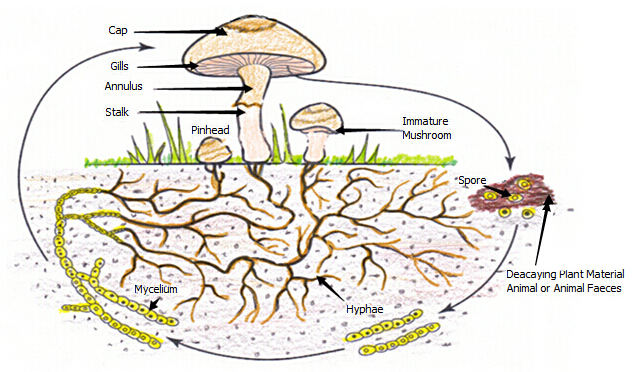
Where art though Fungi?
All fungi require existing organic matter for their food to survive. A fungus that feeds on dead organic matter is called a saprotroph and one that feeds on living organisms is a parasite. While there are species that are always parasitic and others that are always saprotrophic there are also those which may feed on either live or dead organic matter or change from parasitic to saprotrophic behaviour or vice versa, depending on what food sources are available.
A large number of fungi are called mycorrhizal fungi and often form symbiotic associations with other plants and obtain some of the food that the plants produce by photosynthesis. However, unlike parasites, the mycorrhizal fungi do not harm plants. Quite the contrary, they are in fact useful to plants. Most are essential for plant survival. The bulk of the world’s plants have such fungal partners. To give just one Australian example, every eucalyptus tree that you see; whether in park, garden or forest, will have its underground mycorrhizal partners.
Habitats and distributions: Macro and micro fungi are found throughout the world. While many species of micro Fungi are found on land and in water, the macro Fungi are basically terrestrial. Some plants and animals are found in very restricted habitats while others occupy a wide variety of habitats and fungi are no different. This seen in Schizophyllum commune which is found on all the continents except Antarctica, from tropical sea sides to high in sub alpine regions of mountains while Gymnopilus norfolkensis is restricted to Norfolk Island
While many Fungi are always associated with moist locations some specie are found in the deserts like Podaxis pistillaris and Coprinus plicatilis which grows near the shore line of salt lakes in the dry Mallee area of north-west Victoria.
The phoenicoid Fungi like those in the Anthracobia genus prefer areas that have been burnt.
The Peziza genus is found in the hostile environments of Macquarie Island’s sub Antarctica region.
Wherever organic matter lies there’s a Fungus that will utilize it, breaking down the complex carbohydrates further into simple organic matter so that many other Fungi and plants can use it.
Ammonia is toxic to many fungi but there are specie that can tolerate relatively high levels of ammonia which is to be found near dead carcasses. Since decomposing carcasses release high levels ammonia into the underlying soil and atmosphere only the ammonia tolerant Fungi will move in like Hebeloma aminophilum.
At the other end of the scale wood is very high in carbon and very low in ammonium and nitrates yet it too is host to numerous specie of Fungi. Some Fungi only grow on dead wood, while others favour the wood found on living plants. Not even all dead wood is the same. Coniferous wood is quite different to non-coniferous wood and you will find some species able to survive only on coniferous wood, others never on coniferous wood. There are also differences between the environments offered by recently dead wood, partly rotted wood and well-rotted wood. Schizophyllum commune is a wood rotting fungus, found on dead or dying wood from a vast variety of tree species.Cyttaria gunnii grows only on living trees in the genus Nothofagus.
Several Fungi are restricted to growing on animal faeces. Animal faeces are very different and support very different types of Fungi. Herbivores faeces are different to that from carnivores and fresh faeces are rather different to the fungi found on aged dung.
Cordyceps gunnii parasitizes the larval stage of Ghost Moths in the genus Oxycanus. When the mycelium has extracted all the nutrients that it can from its host; which kills it in the process, the fungus produces its fruiting body, releases the spores that will infect other larvae. The mycelium of the Cordyceps gunnii cannot grow outside the larvae of this moth.
The good, the bad & the ugly: Some people look on Fungi as slimy, yucky and disgusting in fact just plain bad and ugly. I see them as intriguing beauties with a myriad of fruiting forms. It’s all a matter of perspective after all “Beauty is in the eye of the beholder.” It is estimated that there could be as many as 250,000 different species Fungi in Australia with some 13,000 higher order Mushrooms and of these only 5,000 have been described. Here is your chance, to get out there and make a name for yourself.
The good Fungi are those we can consume with any meal. Most Fungi are edible even the Puff balls and jelly fungi. All the native Fungi which have been presently tested in Australia (1,000 out of the 13,000 have been tested for edibility) except for 2 are edible and offer wide range of flavours from mild to rather strong, from sweet to slightly bitter. Personally I have not tasted a Fungus I do not like. Agaricus specie are the most widely eaten native specie in Australia. The Agaricus specie can be distinguished from the poisonous mushrooms by its dull white cap, pink gills turning brown with age, white stem, membranous skirt higher on stem and the lack of a cup like structure around the base of the stem. The cap margins are thicker not tapering.
Note not all the native specie have been tested and many are still yet to be identified. Unless you know the exact genus and specie it is wise to treat them with caution as death is slow and painful or poisoning can result in very painful forms of diarrhea with intestinal bleeding. The deadly fungi usually destroy the liver and kidney tissues.
To the photographer the world of Fungi hold fascination coupled with exquisite beauty in all the colours of the rainbow; including florescent green, purple and blue, all ready to unfold in front of the lens. Any photos contributed by members will be warter marked with the members name and attributed to that member.
The good guys continue with helping the gardeners break down waste to absorbable nutrients rich in minerals for our plants.
The bad guys are usually those specie frowned upon as being parasitic or poisonous. Some of the parasitic forms have been described under the heading “Bacteria, Fungus and Phytomediation” so I will not deal with them here.
I started the Good, the bad and the ugly with food so let’s have a look at a couple of the bad guys of the table Amanita phalloides. Amanita phalloides can give you diarrhea, sweating and even kill you so he’s not the one to invite for dinner. Amanita phalloides can be distinguished by its smooth sheen, yellowish-green to pale olive-brown cap, white gills, white stem, membranous skirt on stem and cup like structure around the base of the stem. The cap margins are thinner and some what tapering. The fruiting body measures 60mm to 150mm in diameter usually more than 100mm in diameter.
Amanita phalloides’s cousin Amanita muscaria is also a bad guy that gives people diarrhea, sweating and severe cramps in the stomach with possible death though deaths are very rare but still beware of these 2 nasty guys unless properly prepared in boiling water. Amanita muscaria can be distinguished by its smooth sheen, yellowish-green to pale olive-brown cap, white gills, white stem, membranous skirt on stem and cup like structure around the base of the stem. The cap margins are thinner and some what tapering. The fruiting body measures 60mm to 150mm in diameter usually more than 100mm in diameter.
The bad continues with some of those fungi that consume wood. If you’re a forester or siviculturalist growing trees for the timber then wood rotting fungi that attack the heartwood of live trees spells trouble. It is the heart wood that is the hardest part and brings in the dollars for the farmer. From the tree’s point of view these fungus serve a beneficial purpose. With the heartwood being dead wood and with the living tissue (Xylem and phloem) confined to an area just beneath the bark there is usually no harm to the tree. This hollowing of the trees center makes the trees stronger by making them lighter not top heavy. In a forest situation where winds are only felt near the apexes this is highly beneficial. Further if you’re a possum or a bird that sleeps or nests in hollow limbs and trunks, then the fungus is your resident builder. The animal’s faeces, as is the broken down heart wood left behind by the fungus are also dissolved over time into the pith of the tree and eventually is reabsorbed into the Xylem, transported to the leaves and produces carbohydrates. The decomposing pith absorbs and sterilizes the animal’s faeces. Many Australian soils lack the necessary minerals to grow forest giants so this is an adaptation that has a symbiotic relationship for all concerned. So depending on your individual perspective even the bad Fungi are good Fungi.
The ugly are really beautiful Fungi after all, “dressed in wide array of delicate refinement.”While many look at slime or jelly fungi as slimy and yucky others are transfixed by their shapes and endless patterns. Take a close look at any one of the Hygrocybe species, it’s slimy or should I say its gelatinous looking coat glistens before my lens especially when mirrors reflect light across their nonconforming structures. Now imagine a mass of these cladding a log or small patch along a creek line. A spectacular sight unfolds.
The dainty fairy rings of many small fungi may look ugly as an individual but grouped like sentinels await the camera’s lens. I won’t waste time here as there is so much to introduce. I hope that once you have read this section you too will find the fungi’s reproductive organ both interesting and compellingly beautiful to photograph. So no more talk of them being ugly.
Types of Fungi
The 2 Major Groups: Fungi are classified into macro Fungi and micro Fungi with the macro Fungi being further divided into 2 main groups the Ascomycetes and the Basidiomycetes or A fungi and B Fungi.
We are back on their sex organs. Depending on how their sexual spores are formed depends on whether they will be A or B. To confuse things further many Macro Fungi produce both sexual and asexual spore. We will deal with the sexual spore for ease.
Ascomycetes
In ascomycetes the spores are produced minute chambers called ascus or asci for the plural. The asci are cylindrical to spherical in shape. Most asci have eight spores but can be as little as one or up to several hundred.
The flask fungi are ascomycetes while the truffle fungi include both Ascomycetes and Basidiomycetes types. Now is the time to bring out the hand held Magnifying Glass.
The Flask Fungi produce their spores in tiny, generally spherical, chambers called perithecia. The perithecia usually measure 1mm to 2mm in diameter.
The Ascomycetes Fungi include Cup Fungi and the Flask Fungi while some Truffle Fungi types.
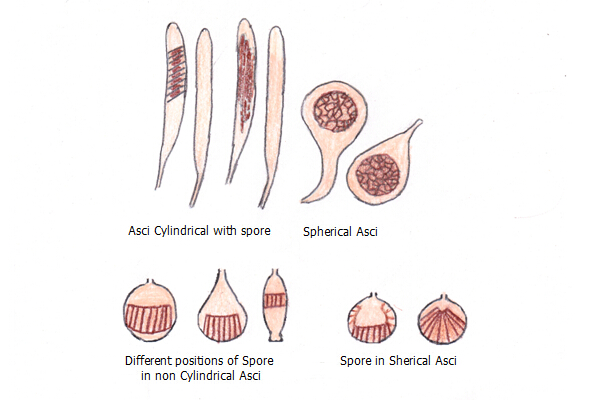
Basidiomycetes
In basidiomycetes the spores develop on growths that grow out from basal cells called basidia, rather than being enveloped within cells. In most cases the basidia are elongated or clavate. Each basidium usually has four sterigmata (Sterigma is the singular) and four spores but some specie may have just one projection and one spore per basidium while others have up to eight. In most basidiomycetes the basidia have no dividing walls or septa.
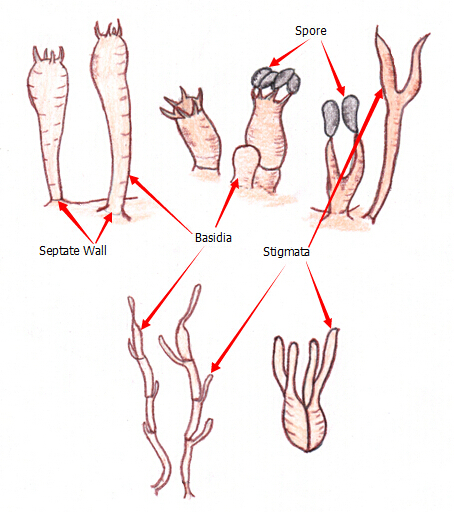
The basidiomycetes include the True Mushrooms with gills, Agaricus, Boletes and Polypores which resemble Mushrooms but have pores, Puff Balls, Jelly fungi.
Agaricus augustus :This is a gill fungi.
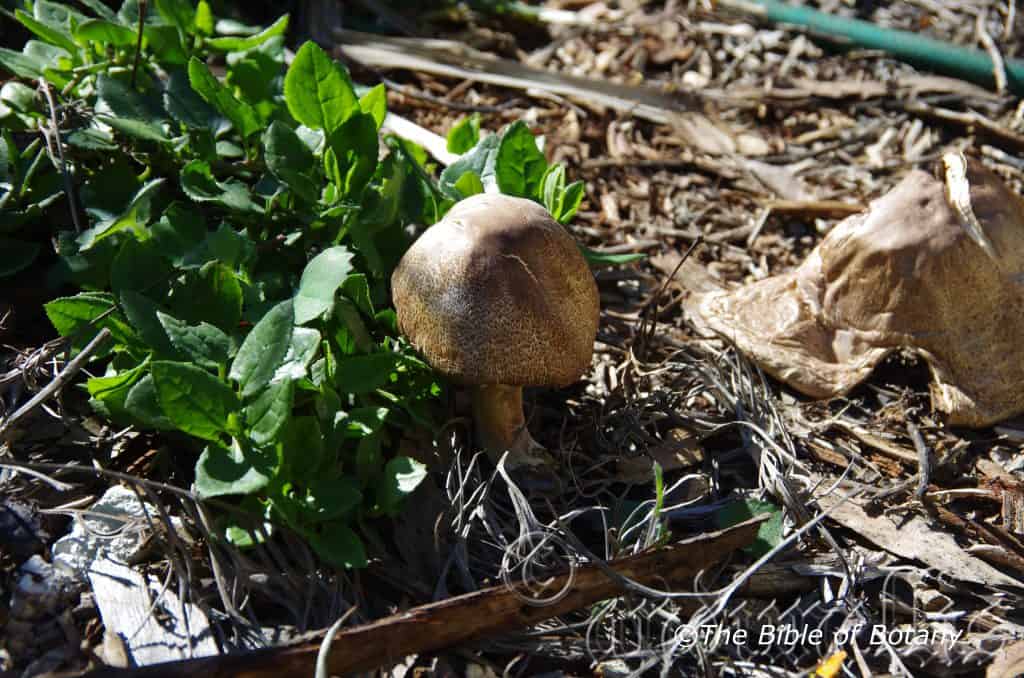


Agaricus campestris: m


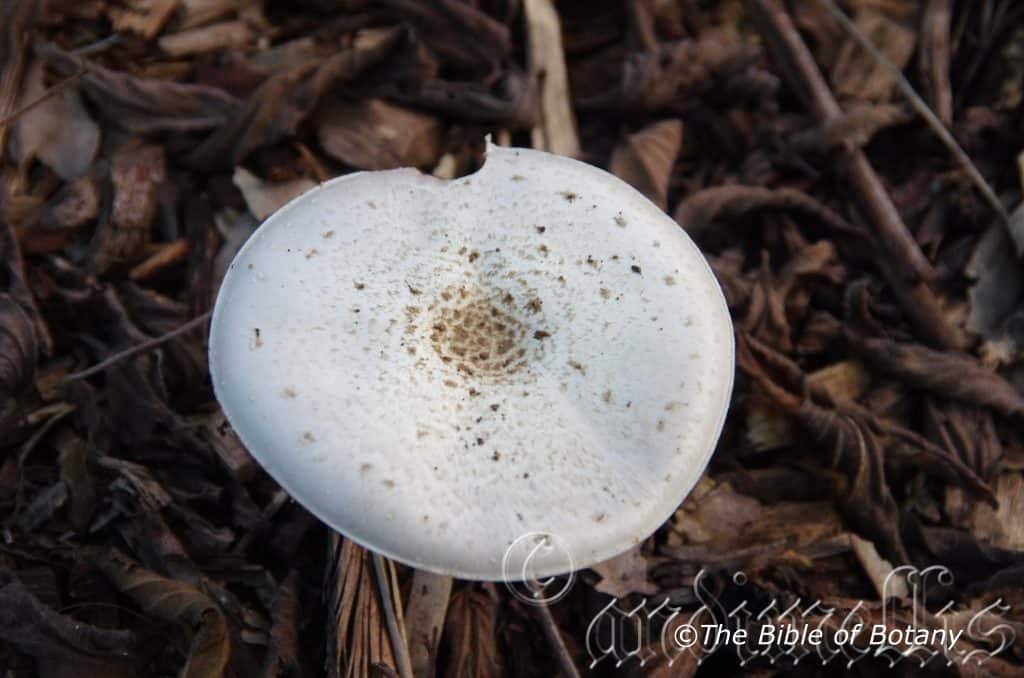
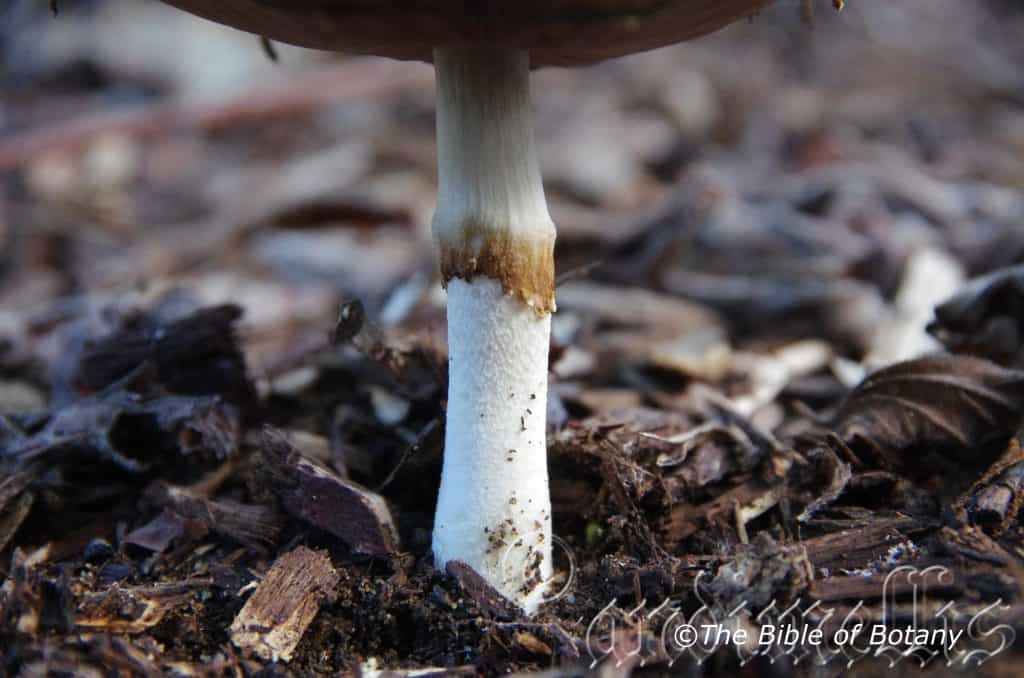
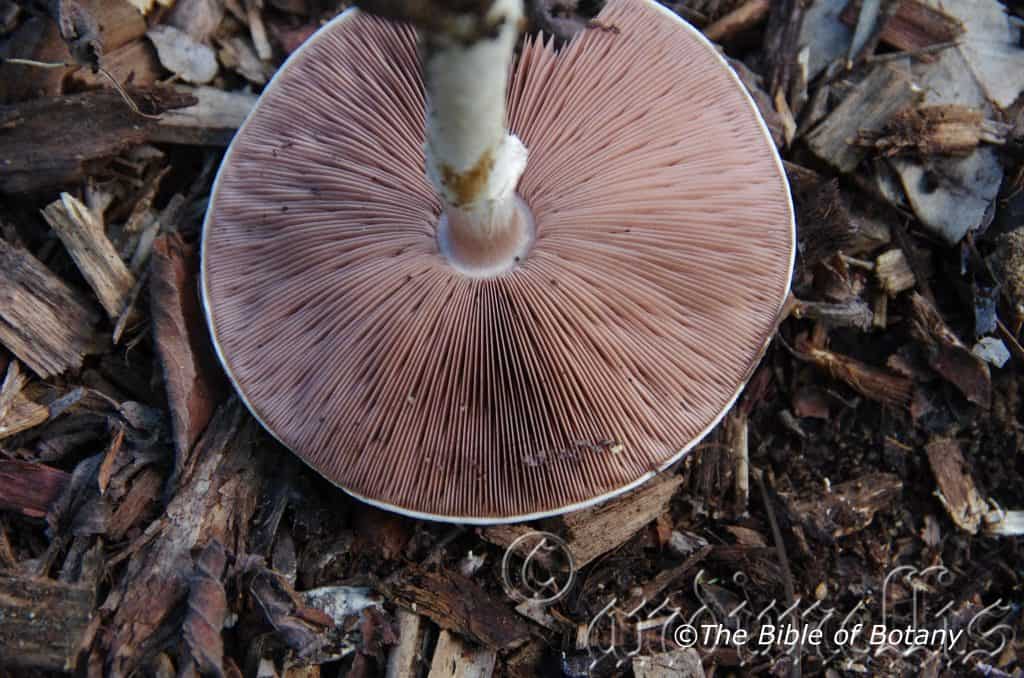
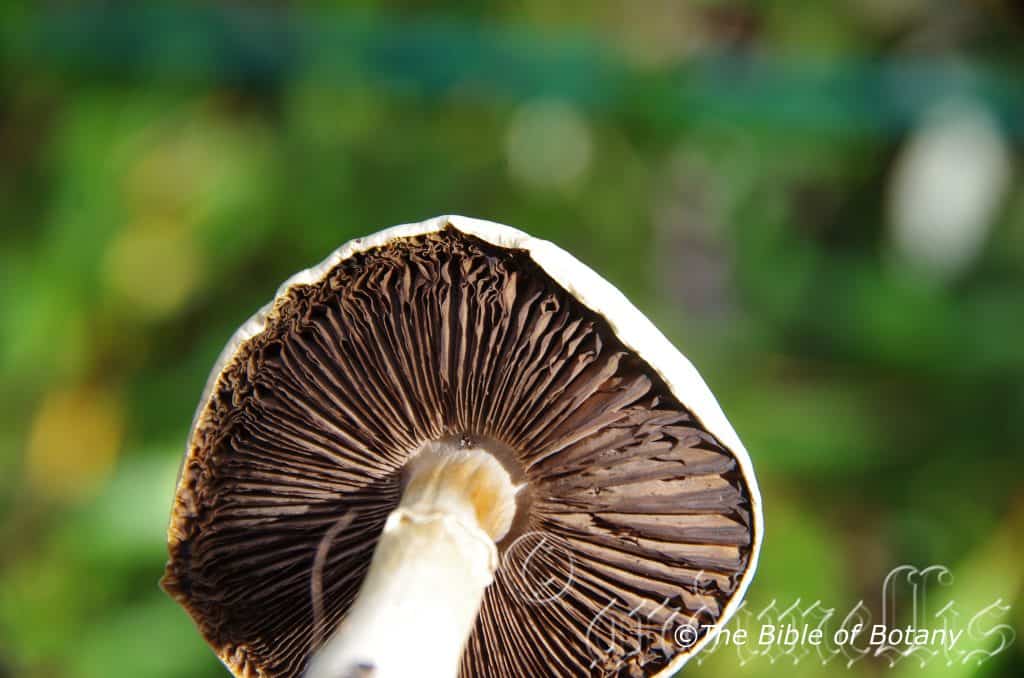

The birds nest fungi are small, steep-sided cups which measure 6mm to 15mm in height by 5mm to 12mm in diameter. They contain large disk-like spore, giving the appearance of eggs in a nest. The cups are generally creamy to grey to light brown and are distinct from the cup-fungi mentioned above. Cyathus stercoreus is common on dung and organically rich soils while Cyathus novae-zealandiae grows on well-rotted wood debris. This Fungus was my weed suppressor in our fern Nursery. After several months of trying to eradicate it we realized that they weren’t causing any damage other than some soil shrinkage, did not affect the plants and may have contributed to the over all health of the mix and aroused curiosity and interest when sold. They were a great guide to the health of our mix.
Further comments From Members:
All information is included in good faith and has been thoroughly researched prior to printing. The website or the author does not warrant or guarantee the accuracy of any information on these pages, nor does the website or the author accept any responsibility for any loss arising from the use of the information found within. The views and opinions are strictly those of the author or those members who chose to actively participate in the contents herein.
“Hi reader, it seems you use The Bible of Botany a lot. That’s great as we have great pleasure in bringing it to you! It’s a little awkward for us to ask, but our first aim is to purchase land approximately 1,600 hectares to link several parcels of N.P. into one at The Pinnacles NSW Australia, but we need your help. We’re not salespeople. We’re amateur botanists who have dedicated over 30 years to saving the environment in a practical way. We depend on donations to reach our goal. If you donate just $5, the price of your coffee this Sunday, We can help to keep the planet alive in a real way and continue to bring you regular updates and features on Australian plants all in one Botanical Bible. Any support is greatly appreciated. Thank you.”
In the spirit of reconciliation we acknowledge the Bundjalung, Gumbaynggirr and Yaegl and all aboriginal nations throughout Australia and their connections to land, sea and community. We pay our respect to their Elders past, present and future for the pleasures we have gained.